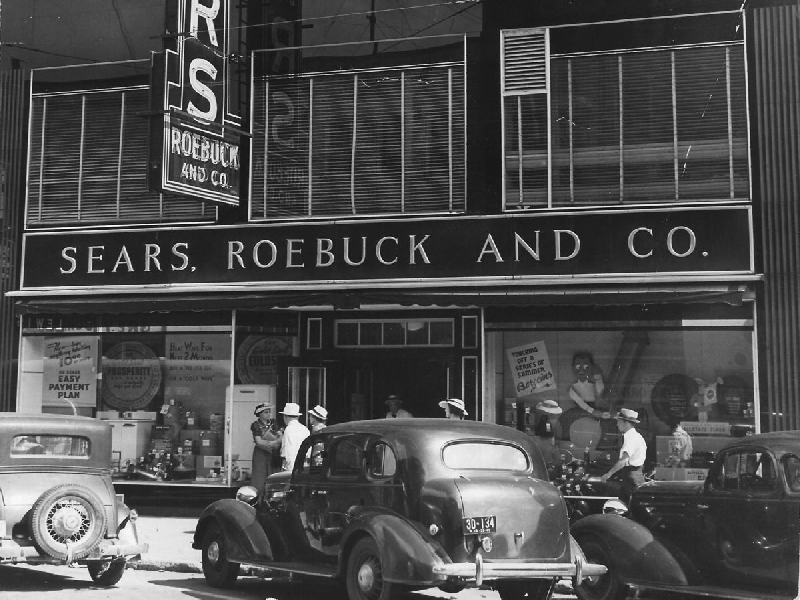
------------------------------------------------------------------------------------------------------

Here's a 1939 view of the Sears, Roebuck & Co. store on downtown Huntington's 4th. Ave.
------------------------------------------------------------------------------------------------------
HUNTINGTON -
Richard Warren Sears was a railroad station agent in North Redwood, Minnesota,
when he received a shipment of fancy watches from a Chicago dealer. A local
jeweler had ordered them
but said he had changed his mind and didn't want them.
Sears could have returned the watches. Instead,
he purchased them, sold them at
a hefty profit and then ordered more. Eventually,
he started a business selling
watches through a mail-order catalogue.
Moving to
Chicago in 1996, Sears met Alvah C. Roebuck, who joined him in the business.
In
1893, the two men renamed their watch company Sears, Roebuck & Co. and began
adding
new items to their catalog. Farmers discovered they could buy tools and
supplies from the
Sears. Roebuck catalog at cheaper prices than they had been
paying at local general stores.
Soon the
company was selling bicycles, sewing machines, sporting goods and a host of
other
items. And the company's catalogs kept growing in size - first to 300
pages, then 500.
Next, the
company took a giant step when it began opening downtown retail stores in
communities all across
America. In downtown Huntington, Sears operated a retail
store at 823 4th Ave. from the 1920s to the 1950s.
Beginning in
the 1950s, Sears decided to leave crowded downtowns behind and build new
stand-alone stores,
modern in design with lots of free parking, In 1958, Sears
moved its Huntington store from 4th Avenue
to a new location on 5th Avenue at
29th Street. The store was big in size,
modern in design and, of course,
surrounded by acres of parking.
When the
Huntington Mall opened in Barboursville in 1981, Sears opened a store there,
closing its 29th Street store.
Big Bear supermarket moved into the vacant 29th
Street building. Then, when Big Bear went out of business,
St. Mary's Medical
Center bought the building and transformed it into its Education Center.
-----------------------------------------------------------
Note: This Article and picture appeared in the Herald-Dispatch Newspaper on May. 18 , 2015
-----------------------------------------------------------
[ Back ]